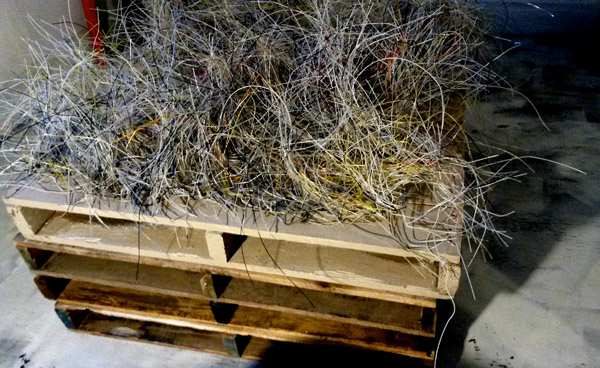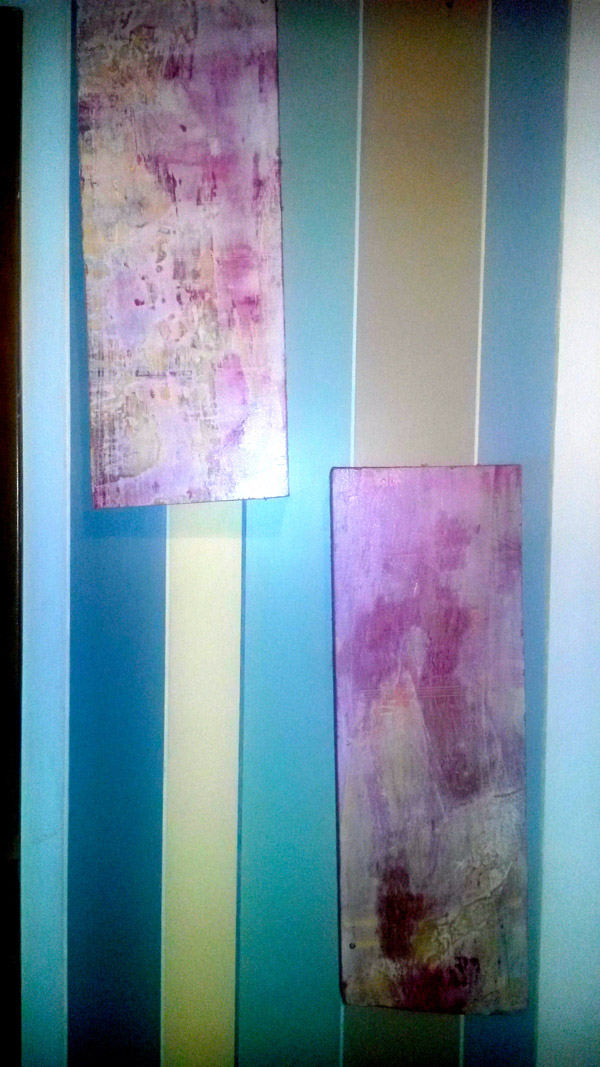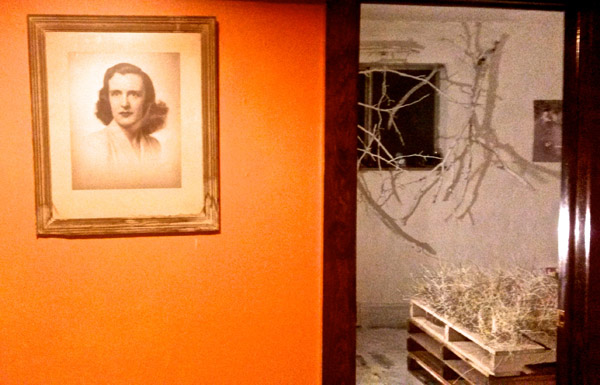
Artist profile: saving the world with Martin Anand
Anand muses on the state of the world.
I met Martin Anand at the show he curated for Public Pool last April, which included his own work, as well as that of some of his favorite art compatriots, Don Staes and Frank Dries. Recently, I got a chance to follow up with him at his Hamtramck home, where we talked about art; looked at work–old, new and borrowed–in his private collection; and played a collaborative board game called Pandemic—the scarily au courant object of which is the suppression and curing of global viruses. As Anand and I rapidly dispatched of international outbreaks and epidemics, our discussion covered a range of subjects and involved multiple breaks to review pieces of works-in-progress or on display in Anand’s living space. His newest piece, which resembles a small funeral pyre made of cut tennis racket strings—detritus from Anand’s career as a professional racquet-stringer for top tennis pros—currently sits atop a stack of pallets that have been repurposed from their previous employment as his bed frame.

New work in progress by Anand.
This, like many of Anand’s austerity measures, reflect a conscious rejection on his part of the cycle of prosperity and acquisition that is the preoccupation of the mainstream. He’s a native of Dusseldorf, where a burgeoning art scene that spawned and showcased some of the greatest art talent of the 1970s generated a feeling that Anand recalls sensing in the very air around him. This early exposure to some of the upper levels of what Anand calls “Capital-A Art” gave him a sense of access to the conversation without the struggle that he thinks is a typical phase of the developing artist. A successful career as a DJ and the launch of a world-class record label gave Anand a taste of material success; enough at least for him to understand that it couldn’t be his driving purpose.

Some of Anand’s paintings, created by a process of reduction, using sanders, or other tools to create an uncannily smooth finish.
For Anand, the only appropriate metric of his success today is the degree to which he is making art the way he wants to—that, and perhaps command over his time, which we both agree is one of life’s most precious commodities. It is this valuation of process rather than outcomes, expression rather than accumulation, and concept rather than objects, that styles a picture of Anand as a kind of anti-Industrialist, cutting against the grain of Detroit’s history as the birthplace of manufacturing.

Our talk included discussion of the power of found objects, power which Anand feels he invests in his paintings and sculpture through the process of living with and deeply considering his work.
A fascinating evening of conversation, full of intention to save the world—at least conceptually.
Recent Content
-
Artsarticle ·
-
Artsarticle ·
-
Artsarticle ·
